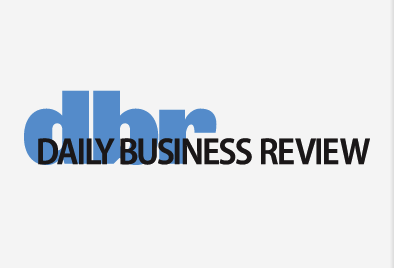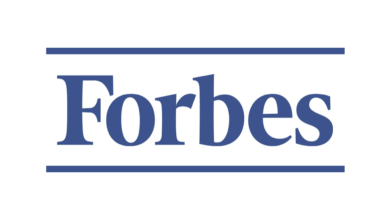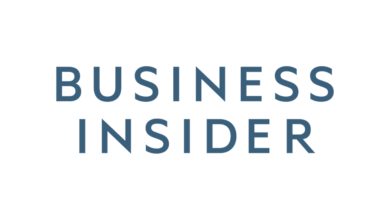Daily Business Review
Business Leaders Feel a Heightened Urgency to Ensure a Solid Financial Position in 2022

January 27, 2022
With the pandemic reminding everyone that the world can change in the blink of an eye, professionals across virtually every industry are feeling a greater urgency to ensure a solid financial position before the next unknown.
There is no question the pandemic affected every business in one way or another, and while everyone responded in different ways (shuttering their businesses, starting new ones, switching careers, etc.), we are seeing a common thread: financial preparedness is ranking higher than in recent history.
Based on our experience helping countless professionals, families, and individuals throughout the past two decades with their financial planning, here is some practical guidance that can bring value to almost anyone in the “New Normal.”
Over the years, we have found it beneficial to help people recognize how their needs will change across every unique stage of their lives, and how to develop the right strategies to ensure they achieve their immediate and long-term goals. Specifically, these life stages are:
Young Adult
The first stage, young adult, is when you get your first “real” job, usually after college, and need to start becoming financially responsible and setting the foundation for your future. This stage is all about basic budgeting, building credit, building emergency funds to maintain 6 months of living expenses, if necessary, a strategy to pay down any student loan debt, and possibly starting a mid and long-term savings strategy. Creating this discipline and structure early in your professional life will get you off to a great start financially.
Helpful tips during this phase of life include:
- Use a budgeting tool to write out your income and expenses.
- Get a secured credit card and use it to build credit.
- If any debt exists, a plan where you tackle the highest interest loans and perhaps get advice from a professional who may be able to restructure the debt.
- Start a money market or other cash equivalent to build up three to six months of living expenses.
- Write down specific financial goals (i.e. buying a home) and figure out how much you will need and by when so you can chip away at the goal month by month
- If possible, start a long-term savings program i.e., a Roth IRA or employer-sponsored program.
Young Family
During this phase, you hope to have your emergency fund in place, establish good credit, and have a down payment for a home. You would want some of the money that you are saving for the long term to be invested in products that ensure you have a well-diversified portfolio of stocks, bonds, and cash equivalents.
Helpful tips during this phase of life include:
- Take advantage of any employer match in a retirement program (i.e. “free money”).
- Buy a primary residence so you can build equity and write off mortgage interest.
- Research and consider the purchase of disability insurance and term-life insurance may be supplemented with a permanent life insurance policy.
- Consider a 529 college savings plan if children are involved.
- When thinking about diversification, expand your thinking into tax diversification as well as investment diversification.
Mid-Life Professional
During the next phase of life, you are considered a more seasoned professional and are much farther along in building your portfolio, and hopefully have increased your income and can more aggressively save for retirement. The next 10 years to 15 years are pivotal for amassing a large enough nest egg so that one day you have the option of not having to work if you choose.
Helpful tips during this phase of life include:
- Maintain healthy short-term savings account for a minimum of six months’ expenses.
- Have a more robust savings strategy in retirement accounts and life insurance.
- Properly fund 529 College Savings plans to meet your goals for your children.
- Maintain proper health insurance and disability insurance.
Pre-Retiree/Retiree
You are now beginning to shift your goals from the accumulation phase to the distribution phase. With this transition comes some important changes, where you have to make sure your portfolios are set up appropriately. This involves having a strategy to ensure you have some investments or resources to draw from in a down market. You never want to be forced to use assets that are experiencing a negative return in order to get income in retirement. This is why a volatility buffer or safe bucket should have been established by this time.
Helpful tips during this phase of life include:
- Own some noncorrelated assets that cannot depreciate. It is recommended that you have three-four years of expenses in this “safe bucket.”
- Noncorrelated assets might include fixed-index annuities, cash equivalents, whole life insurance cash values, or possibly a reverse mortgage.
- Have a plan for long-term care.
Seniors/Older Adults
As you enter this phase of life and look to be in the proper position, you want to make sure money is a nonissue and you can live without any financial concerns.
Ideally, you have created enough guaranteed income sources to pay all your fixed expenses, and have additional resources for any extras you would like to enjoy. If you have not completely tightened up all your estate-planning wishes, you certainly want to check that box as well.
Helpful tips during this phase of life include:
- Have enough annuities, pensions, and social security to cover your fixed expenses.
- Have a diverse portfolio of stocks, bonds, and cash for emergencies and leisure.
- Have a plan for long-term care.
- Make sure you have met with an estate-planning attorney to have all the necessary documentation so your wishes are fulfilled should anything happen.
Without the proper support, financial planning feels overwhelming. However, with the right team supporting and guiding you through each phase of life, you can minimize your financial stress and maximize your goals.
Evan Sussman is honored to serve as Senior Vice President for IFW. Evan has been a successful financial professional for over 17 years. On December 24th 2019, Evan was diagnosed with Stage 3 cancer, and is currently on the road to full recovery. He is forever indebted to the doctors, nurses, and staff that took care of him. Evan has dedicated his career to helping people secure their financial health and well-being.






